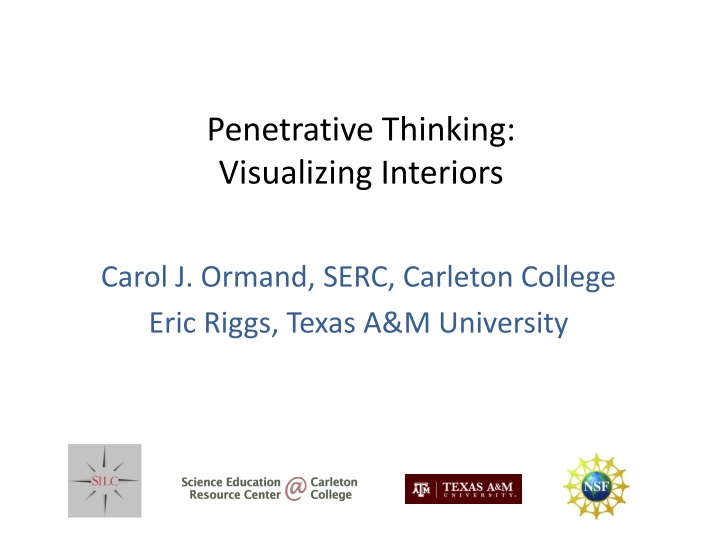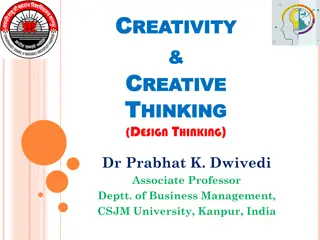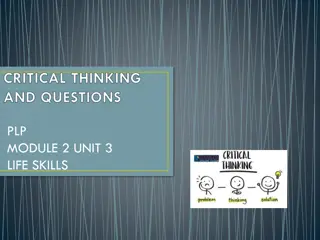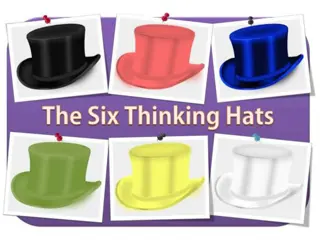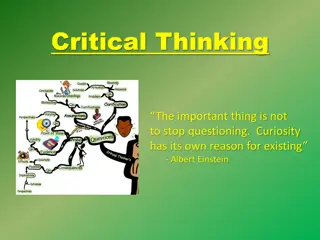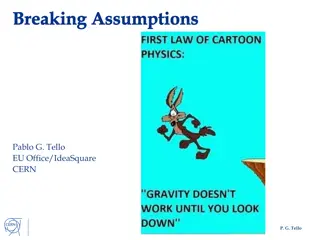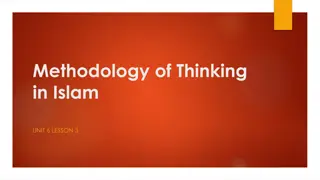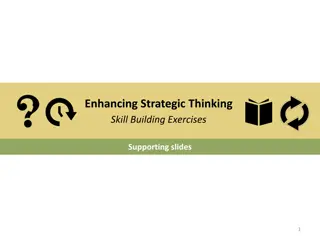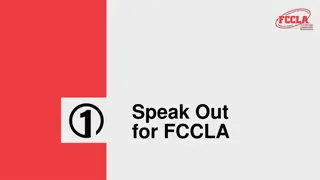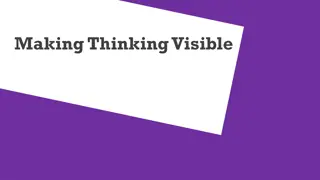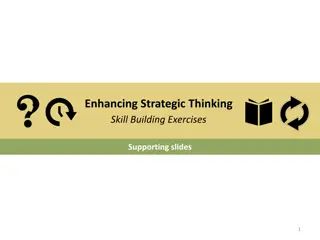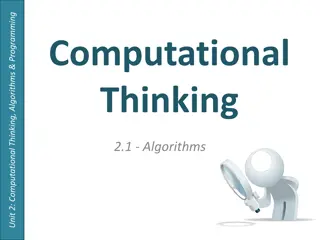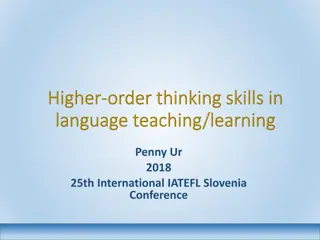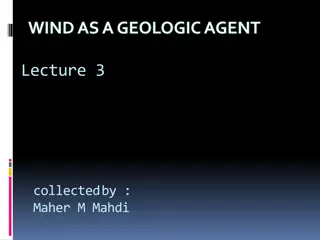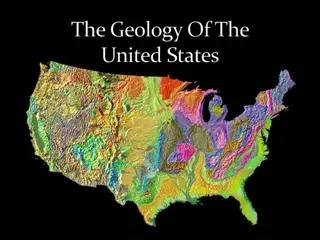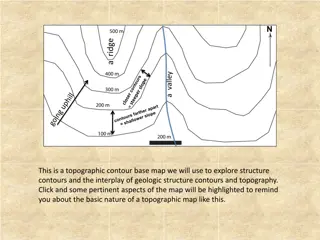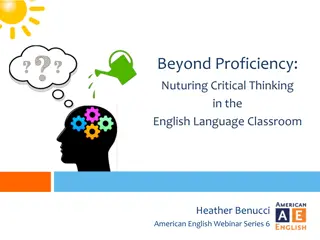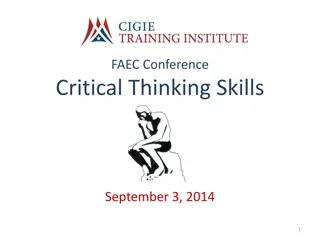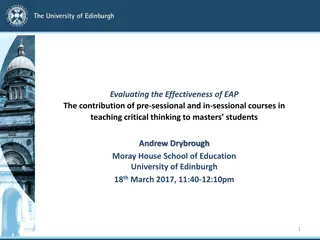Penetrative Thinking in Geologic Structures Analysis
Dive into the world of penetrative thinking in geologic structures analysis with insights from key papers and assessment instruments. Explore the implications, strategies, and tools for enhancing spatial abilities in visualizing interior structures. Discover the Geologic Block Cross-sectioning Test and its role in developing visualization skills.
Download Presentation

Please find below an Image/Link to download the presentation.
The content on the website is provided AS IS for your information and personal use only. It may not be sold, licensed, or shared on other websites without obtaining consent from the author.If you encounter any issues during the download, it is possible that the publisher has removed the file from their server.
You are allowed to download the files provided on this website for personal or commercial use, subject to the condition that they are used lawfully. All files are the property of their respective owners.
The content on the website is provided AS IS for your information and personal use only. It may not be sold, licensed, or shared on other websites without obtaining consent from the author.
E N D
Presentation Transcript
Penetrative Thinking: Visualizing Interiors Carol J. Ormand, SERC, Carleton College Eric Riggs, Texas A&M University
Overview What do we mean when we talk about penetrative thinking? Example: the Geologic Block Cross-sectioning Test Key papers & assessment instruments Kali and Orion, 1996: GeoSAT Ormand et al., 2014: GBCT There are LOTS of other papers; see the reference list on the workshop website: http://serc.carleton.edu/earth_rendezvous/2016/program/morning_ workshops/w12/resources.html SILC instrument collection: http://www.silccenter.org/index.php/testsainstruments Implications, strategies, and tools for teaching / training SILC and the Shipley research lab (esp. work by Atit, Gagnier) Spatial Thinking Workbook: exercises informed by this work Steve Reynolds semi-transparent blocks Rowan Cockett s Visible Geology
5 minutes of experiential learning: the Geologic Block Cross-sectioning Test
Kali and Orion, 1996 Spatial Abilities of High School Students in the Perception of Geologic Structures GeoSAT: geologic spatial ability test; open- ended questions 115 HS students, 6 of whom were interviewed Key findings: Incorrect answers can be penetrative or non- penetrative To solve the GeoSAT problems, one has to be able to visualize the structure and imagine its interior
Geologic Block Cross-sectioning Test: Constructed to take advantage of common novice errors (Ormand et al., 2014) This answer assumes that what you see on the side of the block goes straight in the layers on the right go straight in from the side of the block, while the top layers go straight down. This answer assumes that whatever is on the face of the block that is parallel to the slicing plane (the parallel face) goes all the way through the block Slicing Plane This answer assumes that whatever lines or shapes are inside the parallelogram that outlines the slicing plane is what s inside the block
The Novice-Expert Spectrum Differences in skill levels Differences in types of errors reveal relative sophistication of penetrative thinking Variations within expert subpopulations Novice GBCT Scores Expert GBCT Scores 5 25 4.5 Frequency of Test Score Frequency of Test Score 4 20 3.5 3 15 2.5 2 10 1.5 1 5 0.5 0 0 0 1 2 3 4 5 6 7 8 9 10 11 12 13 14 15 16 0 1 2 3 4 5 6 7 8 9 10 11 12 13 14 15 16 Test Score Test Score Ormand, Carol J., Thomas F. Shipley, Charles Kiven, J. Steve Davis, Dale Klopfer, and Peter Vrolijk (2014). The Geologic Block Cross-Sectioning Test: Insights Into the Novice-Expert Spectrum in Visual Penetrative Ability: Geological Society of America annual meeting (Vancouver, BC).
Novice vs. Expert Errors Frequency of Types of Answers Chosen by Novices Frequency of Types of Answers Chosen by Experts Parallelogram Correct Parallel face Parallelogram Correct Parallel face Straight in Perpendicular face Other Straight in Perpendicular face Other No answer Ormand, Carol J., Thomas F. Shipley, Charles Kiven, J. Steve Davis, Dale Klopfer, and Peter Vrolijk (2014). The Geologic Block Cross-Sectioning Test: Insights Into the Novice-Expert Spectrum in Visual Penetrative Ability: Geological Society of America annual meeting (Vancouver, BC).
Assessing penetrative thinking in Geology (see handout) Domain general Planes of reference SILC s Cross-sectioning test for children Domain specific GeoSAT (Kali & Orion) Crystal slicing (Ormand et al.) Domain specific version of Planes of Reference Geologic Block Cross-sectioning Test (Ormand et al.) MC outgrowth of Kali & Orion s test
Implications, Strategies, and Tools for Teaching ( That s great, but how can I use it in my classroom? )
Improving penetrative thinking skills: predictive sketching & immediate feedback Laboratory experiments explored the effect ofsketchingvs. visualizing on students ability to visualize object interiors. Sketchers visualize more accurately. 64 undergraduate psychology students (half in each condition) Pre- and post-test: 7 items from the GBCT Experimental condition: make predictive sketches, for each of a series of progressive slices through PlayDoh models of geologic structures Control condition: place colored dots where you expect the center of each layer to be, for each of the same series of progressive slices through the same models Gagnier, Kristin Michod, Kinnari Atit, Carol J. Ormand, and Thomas F. Shipley. Comprehending Diagrams: Sketching to Support Spatial Reasoning. Submitted to Topics in Cognitive Science.
Improving penetrative thinking skills: have students show what they are thinking with gestures Laboratory experiments explored the effect of subjectsgesturingvs. verbally describing the structures shown in geologic block diagrams on their ability to visualize interiors. Note: it s not just that better visualizers gesture more accurately. Students who gesture develop the capacity to visualize more accurately. Photo by Tim Shipley Atit, Kinnari, Barbara Dutrow, Carol Ormand, and Thomas F. Shipley (2013). Gesture and Three-Dimensional Visualization: AAPG Hedberg Conference on 3D Structural Geologic Interpretation (Reno, NV).
Well spend the rest of this hour in exploration Spatial Thinking Workbook http://serc.carleton.edu/spatialworkbook/index.html 24 exercises several each of domain general, Mineralogy, Structure, and Sed/Strat mostly, but not all, focused on penetrative thinking Each exercise uses gesture, sketching, and/or analogy Reynolds' semi-transparent blocks http://reynolds.asu.edu/blocks/home.htm Structures, in rectangular blocks that can be made semi-transparent He also has visualizations of topography, which we ll look at tomorrow but feel free to look ahead Visible Geology http://app.visiblegeology.com/ Structures + topography Cross-sections, stereonets, strike and dip, and other fun tools
References Atit, Kinnari, Barbara Dutrow, Carol Ormand, and Thomas F. Shipley (2013). Gesture and Three-Dimensional Visualization: AAPG Hedberg Conference on 3D Structural Geologic Interpretation (Reno, NV). Gagnier, Kristin Michod, Kinnari Atit, Carol J. Ormand, and Thomas F. Shipley. Comprehending Diagrams: Sketching to Support Spatial Reasoning. Submitted to Topics in Cognitive Science. Kali, Y. and Orion, N. 1996. Spatial abilities of high-school students in the perception of geologic structures. Journal of Research in Science Teaching, v. 33, pp. 369-391. Ormand, Carol J., Cathryn A. Manduca, Thomas F. Shipley, Basil Tikoff, Cara L. Harwood, Kinnari Atit, and Alexander P. Boone (2014). Evaluating Geoscience Students' Spatial Thinking Skills in a Multi-Institutional Classroom Study: Journal of Geoscience Education, v. 62, n. 1, pp. 146-154. JGE Paper of the Year. Ormand, Carol J., Thomas F. Shipley, Charles Kiven, J. Steve Davis, Dale Klopfer, and Peter Vrolijk (2014). The Geologic Block Cross-Sectioning Test: Insights Into the Novice-Expert Spectrum in Visual Penetrative Ability: Geological Society of America annual meeting (Vancouver, BC). Additional references are listed on the workshop website.
